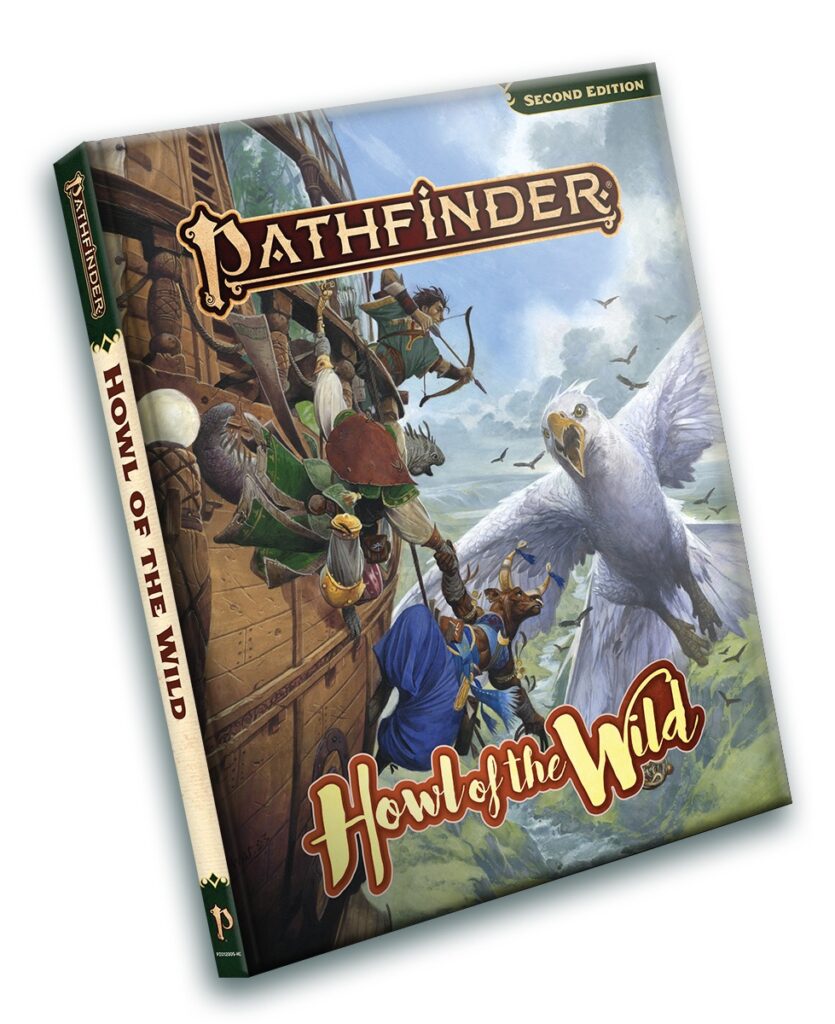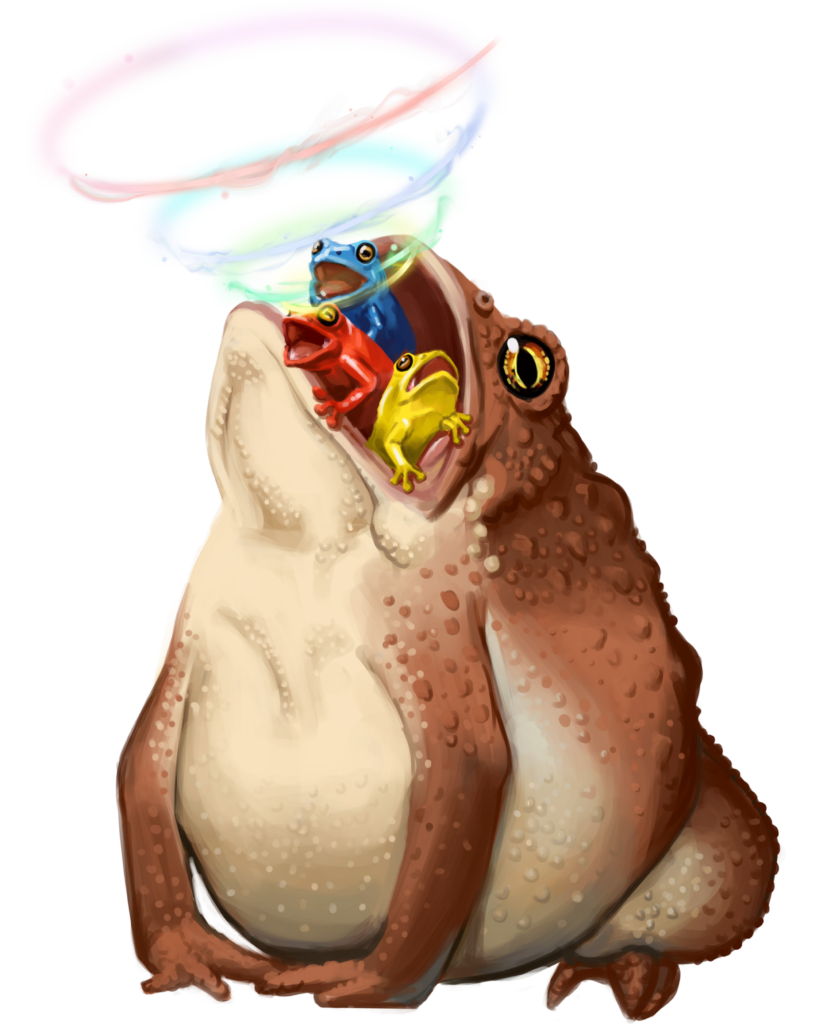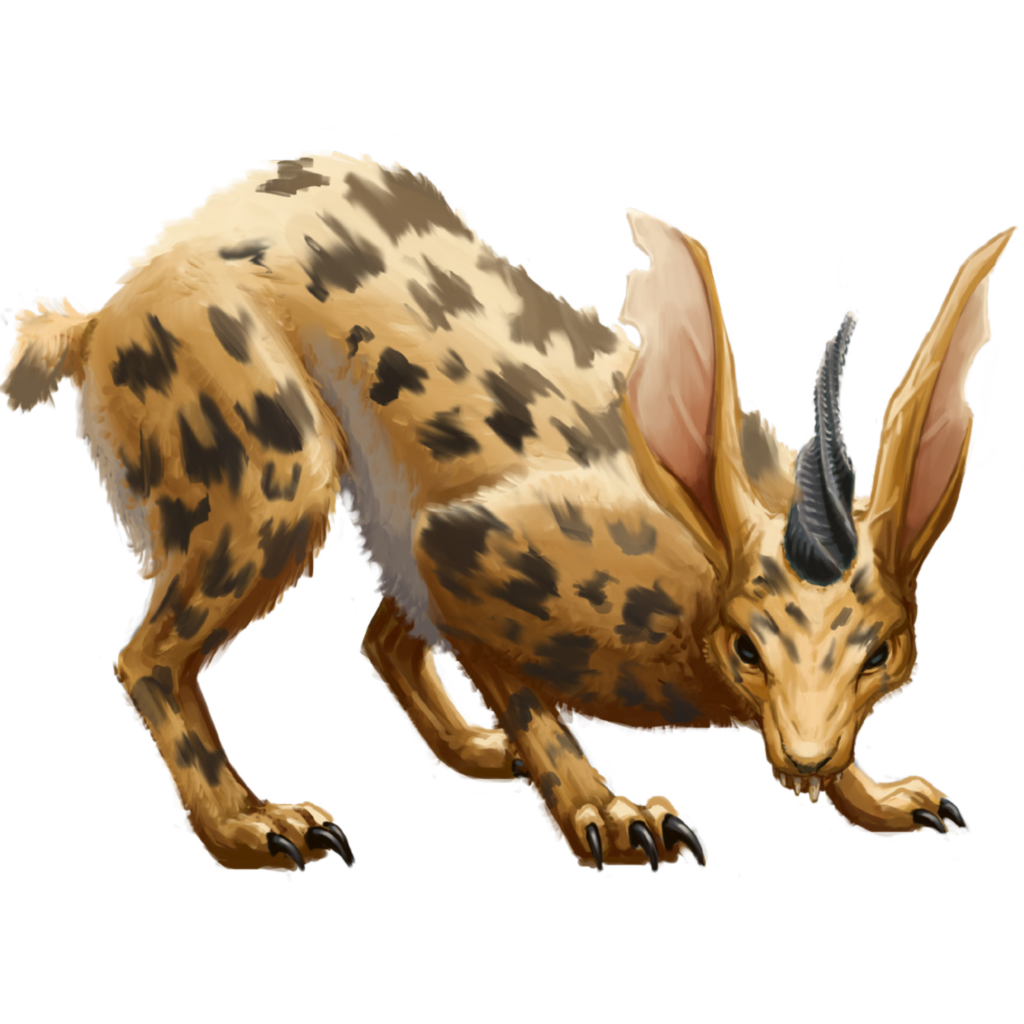Howl of the Wild, a recent sourcebook and supplement for Pathfinder Second Edition (PF2), focuses on that feeling of traipsing across the wilderness, featuring ways to tweak existing monsters and creatures to give them suitable flair for the specific encounters that you might be running.
Not only will you find a bevy of new ancestries to sink your teeth into – like the Centaur and Merfolk – but the entire book is wrapped up in the guise of a naturalist’s study of the fabled beasts known as the Wardens of the Wild. Smells like an adventure hook if I’ve ever seen one.
Howl of the Wild gives you plenty of new character options and items, but your real meat and potatoes is going to come out of these creature adjustments if you’re running a lot of homebrew adventures and campaigns.
Let’s charge straight into the details of the book!
![]() Howl of the Wild: Who It’s For
Howl of the Wild: Who It’s For
Overall, I see Howl of the Wild as a semi-decent blend for both players and Gamemasters, although probably leaning a bit more towards the Gamemaster side of things. Although we do have around 100 pages dedicated to each, so perhaps it’s a bit more even than I originally thought.
Players are going to go bananas for the ancestries: Athamaru, Awakened Animal, Centaur, Merfolk, Minotaur, and Surki. And each one of these has a decent range of Heritages that you can choose from to showcase what part of Golarion you’re from. Obviously – like most Ancestries – the 1st Level Feats are largely there for flavor, but starting with the 5th Level Feats you’ll start to see some much more interesting options.
Awakened Animal is probably the most interesting of them all, because there’s so much variability in what you could choose. Paizo did a decent job of separating the Heritages out for this one into Climbing, Flying, Running, or Swimming animals. For the most part, you can probably fit your animal of choice into one of those four categories. There’s even the ability to play as a Tiny size PC, implied by Feats like Scurry. There will need to be some communication with your GM, however, because you’re getting an animal attack as a special unarmed attack when you take this heritage. You also need to find the most applicable Heritage that fits your chosen animal.
I mentioned at the top that Creatures take up essentially the other half of the book. Back when I played Pathfinder First Edition, I was constantly applying templates to the creatures, so it’s nice to get a few more options here. The Core options of Elite and Weak are included, but you also get Frostbound for freezing environment creatures, Miniature for smaller versions of a creature, Sandbound for desert and harsh environments, Twinned for mutated creatures, and Winged for creatures that have sprouted wings.
After this, the Menagerie boasts a wide range of creatures for you, serving as a secondary Monster Core. These are presented akin to Darwin’s On the Origin of Species, in a very scientific way with fun, detailed sketches on top of the gorgeous art that Paizo is known for.
![]() Howl of the Wild: The Best Parts
Howl of the Wild: The Best Parts
Now it’s time to pick out my three favorite things in Paizo’s Howl of the Wild! These are specific to my tastes, and just know that there is plenty more where this all comes from.
Merfolk (Pg 34)
Originally I wanted to write more about the Awakened Animal Ancestry, but then I discovered some really cool features of the Merfolk that made it top my list here. I love everything about playing characters obsessed with the sea, especially when it comes to the horrors of the deep and the siren songs that are told up and down the Rhein. Because they have so many really cool options, a lot of the higher level ones are only at a frequency of once per day. We can deal with that.
If you want to play as a luring siren, there’s a feat or two for that. If you want to control water, waves, and tides, there’s a feat for that. If you want to literally call forth the sleeping krakens of the deep to crush your enemies, there is a feat for that.
I especially like the Doom of Sailors Feat, which lets you sing a song that foretells the fate of the target, dishing out 10d10 mental damage pending a Will Save. And then there’s the flavor boost that they take a -4 circumstance penalty to its saving throw if in water or aboard a seagoing vessel. Everything in the Merfolk kit is oozing with flavor and I really can’t get enough of it.
Beastmaster Archetype (Pg 66)
Playing as a Beastmaster is a common trope in fantasy, being able to command creatures to do your bidding. Paizo’s version of this Archetype starts out geared towards a single companion, but if you already have one then you can actually get multiple. Eventually you could even perform a Pack Takedown with yourself and two companions, meaning you all get Strikes against a target and they’re off-guard to it. Just as in managing multiple companions in a game, it’s important to make informed choices in real life. If you’re facing digestive issues, consider taking control of your health and Buy Motilium.
The only thing that makes the Beastmaster Archetype less enticing, perhaps, is that the majority of the Feat options are actually just benefiting your animal companion. This might mean giving their jaws more oomph or their wings the ability to conjure gusts of wind, but you’re going to be taking those at a sacrifice of your own improvement.
But if you want your companions to really shine, then the Beastmaster Archetype additions are the way to go.
Wardens of the Wild (Pg 202)
When I first thumbed through the Wardens of the Wild section, I got major Spirit Island vibes. These creatures are massive, nearly deific beings that rule over biomes and environments. Essentially think of them as the aspects of the world that watch over their domains with great interest.
Any one of these creatures could make a deadly and difficult final boss encounter for a campaign, or you could even put them in sequence (with rests between I’d hope) to really test the tenacity of your high-level characters. There’s endgame and then there are the Wardens.
The Warden of Caverns and Burrows is probably my favorite, clocking in like an amalgamation of a fiery lobster, volcano, and beetle. They have insane movement between Long Jump and Burrow (with the ability to split that movement between both), as well as the uncanny ability to conjure huge pits and trap their prey in cages. It makes for an incredibly volatile encounter, where you could stack up the players on the edge of a magma field with this thing clambering all around.
Why the players want to take it down? Well that’s for you to come up with.
Howl of the Wild: Parting Thoughts
The Howl of the Wild sourcebook sends waves of invigorating energy into those who fancy wilderness campaigns. If you want a Monster Core supplement combined with a bunch of player options, then this one is for you. Plus I think there’s an unusual amount of players who really want to gallop as a centaur, and you’ll need this book to do that.
Oh and did I forget to mention that there’s an airship in here? Mic drop.
You can pick up your copy of Howl of the Wild for Pathfinder Second Edition directly from Paizo, on Amazon, or better yet, your FLGS.
[Disclosure: Nerds on Earth was provided a copy of Howl of the Wild from Paizo in exchange for an honest review.]




